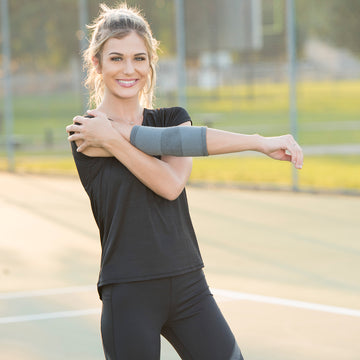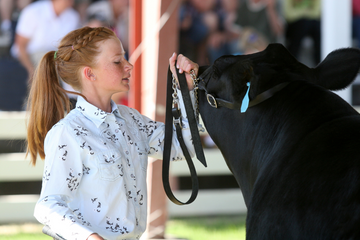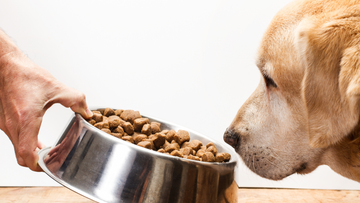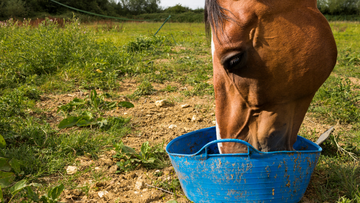As springtime begins, most mare owners will find their leading ladies getting friskier, more opinionated, and potentially uncomfortable.
Mares are seasonally polyestrous, which means their reproductive cycles are active during the spring and summer. This is nature's design to ensure foals are born in the warmer months since a horse's gestation cycle is 11 months.
Some mares will cycle year-round, but most mares begin experiencing estrus, also known as “heat” in April. The longer days in spring and summer set the cycle in motion, while shorter days shut it down.
Mares can be exhausted by this process, and according to The REINER writer Barb Crabbe, the release of estrogen in the heat cycle relaxes muscles. This decreased muscular support can put the mare at higher risk for soft-tissue strains and make training uncomfortable.
Breakdown of Heat
As the days grow longer, a mare’s pineal gland triggers the release of gonadotropin-releasing hormone (GnRH) from the hypothalamus. GnRH causes two hormones, follicle-stimulating hormone (FSH) and luteinizing hormone (LH) to be released from the pituitary gland and begin working in alternating fashion.
FSH and LH encourage the growth and release of follicles, which are the beginning stages of an oocyte (future egg). This stage takes approximately six days, and a clinical mare will show active heat, peeing, tail-swishing, and squealing to attract stallions.
After matured oocytes are released, a corpora lutea (CL) forms on an ovary to act as a ‘pause’ mechanism, producing pregnancy hormone progesterone. If a mare is bred, this gives the embryo time to develop and implant in the uterus. This is the period of ‘calm’ when a mare isn’t exhibiting signs of heat. The CL will remain in place for 15 days after which the cycle will repeat if no embryo is present.
Therapeutic Heat Management
Sometimes, a mare’s body needs a little help without receiving full-blown medical treatment. Therapeutic remedies give mare owners more options and can be used in conjunction with hormonal therapy if needed.
Herbs to the rescue
There are several herbal remedies to soothe fussy mares. Red clover and licorice root can help balance reproductive hormones while chamomile flowers promote relaxation.
The star homeopathic plants of mare management are raspberry leaves, which contain high levels of magnesium. Magnesium has a calming effect and reduces the severity of colic. Mare Magic is a standout product in the therapeutic realm, and its active ingredient is raspberry leaves!
Other calming plants include valerian root, blue vervain, black cohosh, wild lettuce, and cherry plum. Look for these ingredients when searching for herbal supplements for your mare.
Utilize therapeutic fabrics
Use therapeutic fabrics and far infrared waves to your advantage with BeneFab’s Rejuvenate SmartScrim Sheet. Engineered to pull blood to Chinese acupuncture points, the blanket’s 90 magnets soothe muscles and promote relaxation through the body, especially the back. The breathable mesh means it can be paired with a blanket on a brisk spring day or by itself during the heat of summer, keeping your mare relaxed year-round.
Manipulating Heat Itself
If a mare is unrideable and unhappy during her heat cycles, it may be worth considering some hormone therapy paired with therapeutic management. Ideally, hormone therapy tricks the mare into thinking she’s pregnant (much like human birth control pills) or stops the cycle from happening altogether. Make sure to involve your veterinarian in any decisions on hormone therapy for your mare.
Give a mare progesterone
By giving a mare altrenogest (synthetic progesterone), she will think she’s pregnant and the heat cycles will cease. This is an oil-based medication traditionally called Regumate, and can be administered throughout the year or periodically to control heat.
The medicine is proven to be effective and safe for mares. Unfortunately, it can cost $100 a month or more and is dangerous to women when absorbed through the skin. Non-porous gloves are needed when women are administering the medication.
Altrenogest can also be purchased in an injectable form, although its effectiveness has been debated.
Stop GnRH release
By stopping the release of GnRH, a mare will not start a cycle. One of the most common ways of stopping GnRH is with a GnRH vaccine. It takes two initial injections with annual boosters to maintain the effect.
This option is convenient, but can permanently alter a mare’s reproductive cycle. Plus, it is not available in the United States so it can be difficult and expensive to source.
There are several options when it comes to managing a mares’ cycle and making her more comfortable. From homeopathic and therapeutic to medical, there are ways to make our mares more comfortable during the breeding season.























